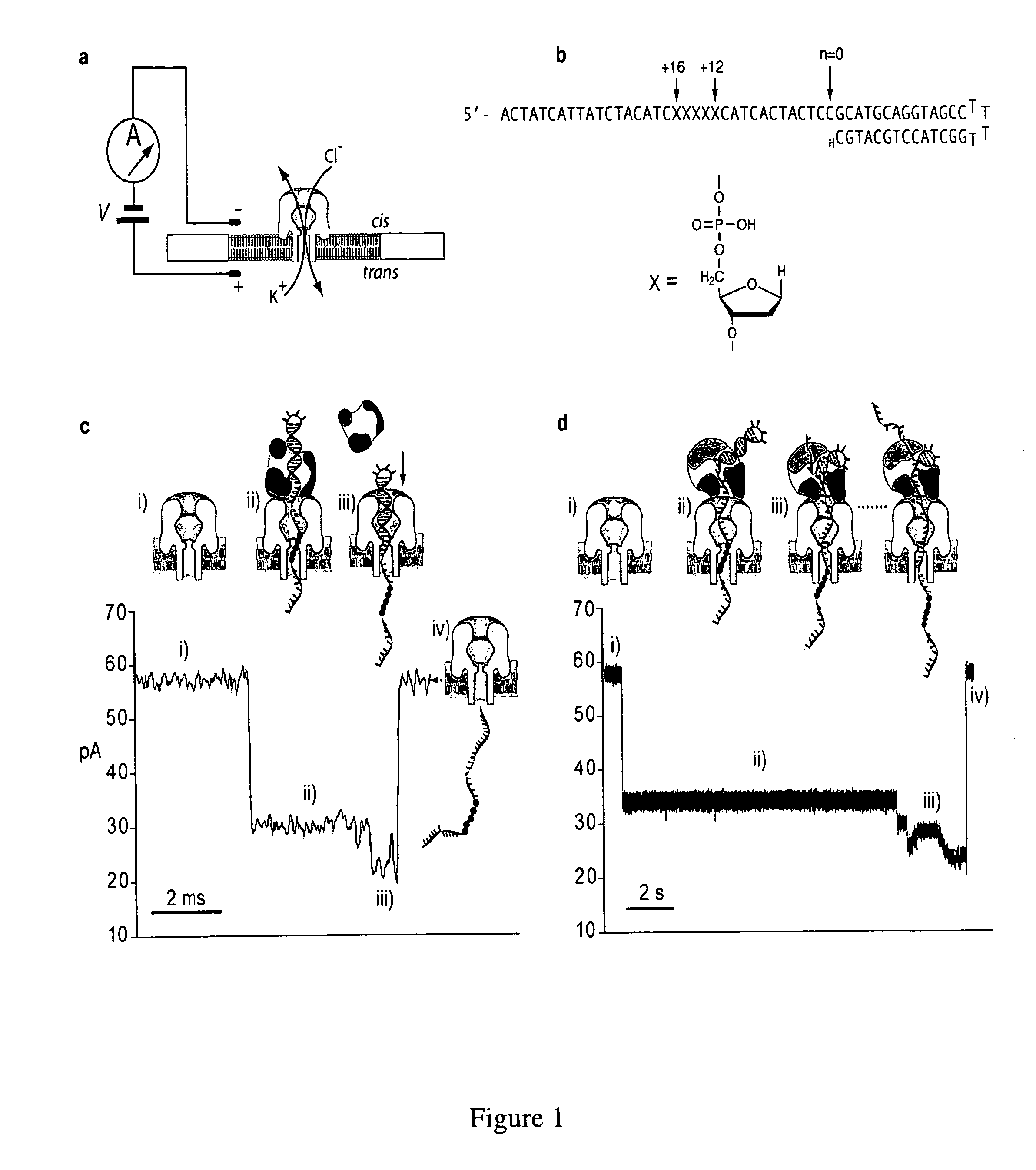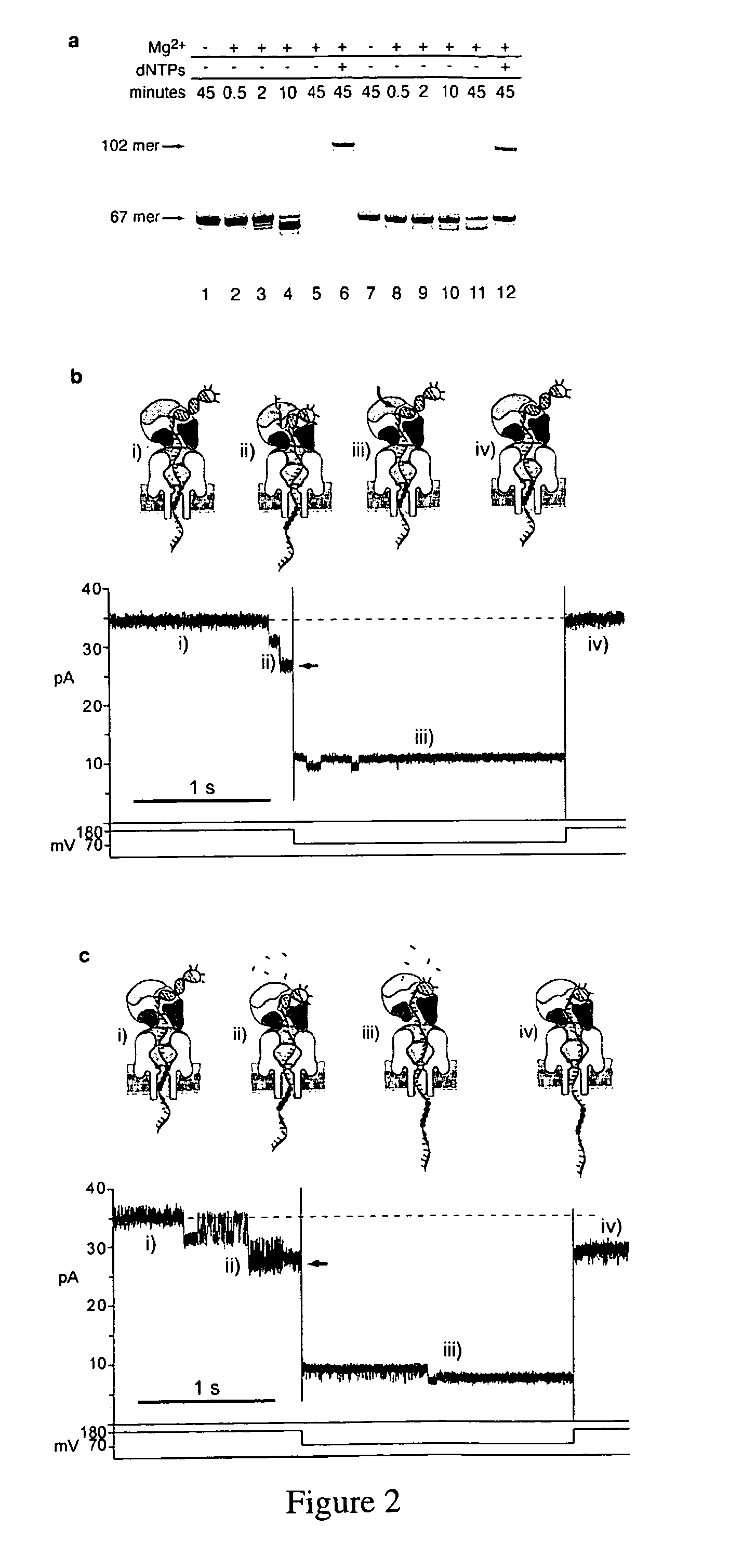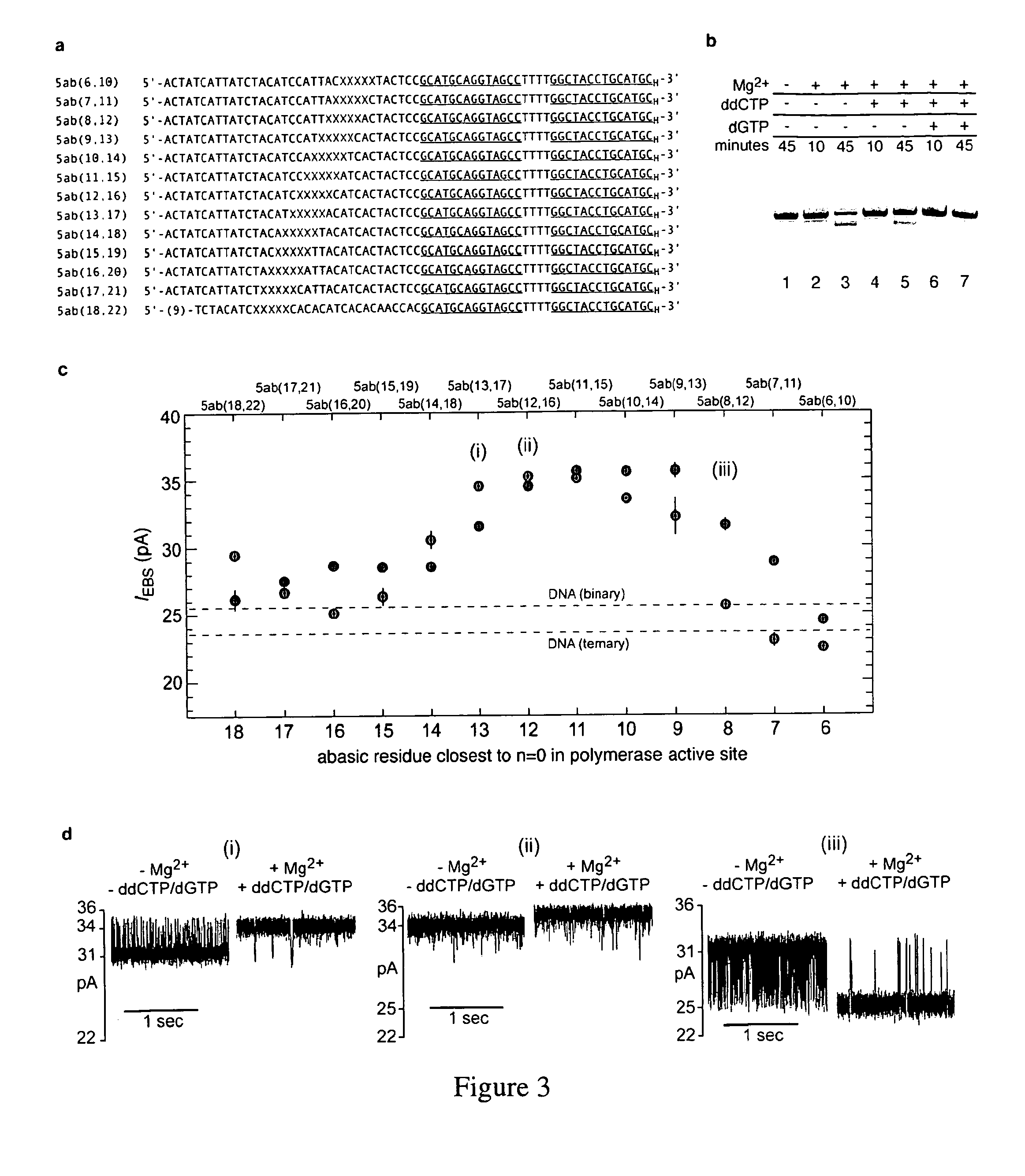Control of DNA movement in a nanopore at one nucleotide precision by a processive enzyme
- Summary
- Abstract
- Description
- Claims
- Application Information
AI Technical Summary
Benefits of technology
Problems solved by technology
Method used
Image
Examples
examples
[0267]Herein are described several examples to demonstrate the capability of measuring macromolecules and polanions or polycations.
example i
Enzymes and DNA Oligonucleotides Enzyme Binding is Prevented by a Blocking Primer
[0268]The D355A, E357A exonuclease-deficient KF (100,000 U ml−1; specific activity 20,000 U mg−1) was from New England Biolabs. Wild-type phi29 DNAP (833,000 U ml−1; specific activity 83,000 U mg−1) was from Enzymatics. DNA oligonucleotides were synthesized at Stanford University Protein and Nucleic Acid Facility and purified by denaturing PAGE.
example ii
Primer Extension and Excision Assays
[0269]A 67 mer, 14 base-pair hairpin DNA substrate labeled with 6-FAM at its 5_end was self-annealed by incubation at 90° C. for four minutes, followed by rapid cooling in ice water. Reactions were conducted with 1 μM annealed hairpin and 0.75 μM phi 29 DNAP(exo+) in 10 mM K-Hepes, pH 8.0, 0.3 M KCl, 1 mM EDTA, 1 mM DTT with MgCl2 added to 10 mM when indicated, and dNTPs added at the concentrations indicated. Reactions were incubated at room temperature for the indicated times and were terminated by the addition of buffer-saturated phenol. Following extraction and ethanol precipitation, reaction products were dissolved in 7 M urea, 0.1×TBE and resolved by denaturing electrophoresis on gels containing 18% acrylamide:bisacrylamide (19:1), 7 M urea, 1×TBE. Extension products were visualized on a UVP Gel Documentation system using a Sybr Gold filter. Band intensities were quantified using ImageJ software (NIH).
PUM
| Property | Measurement | Unit |
|---|---|---|
| Fraction | aaaaa | aaaaa |
| Fraction | aaaaa | aaaaa |
| Molar density | aaaaa | aaaaa |
Abstract
Description
Claims
Application Information
 Login to View More
Login to View More - R&D
- Intellectual Property
- Life Sciences
- Materials
- Tech Scout
- Unparalleled Data Quality
- Higher Quality Content
- 60% Fewer Hallucinations
Browse by: Latest US Patents, China's latest patents, Technical Efficacy Thesaurus, Application Domain, Technology Topic, Popular Technical Reports.
© 2025 PatSnap. All rights reserved.Legal|Privacy policy|Modern Slavery Act Transparency Statement|Sitemap|About US| Contact US: help@patsnap.com



